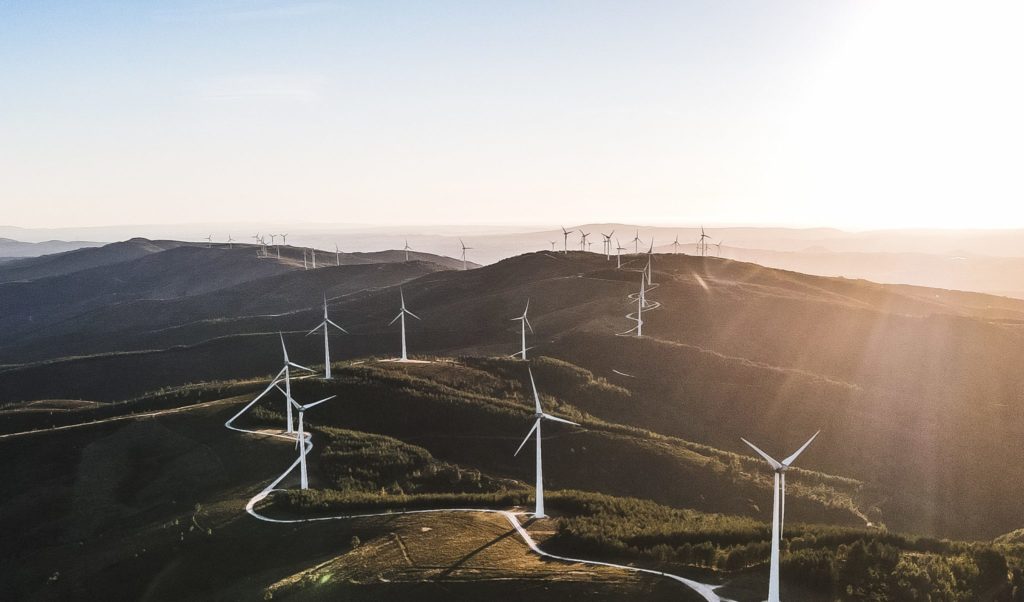According to the US Energy Information Administration, nonrenewable resources are those that do not ‘form or replenish in a short period of time’. What that means is that natural resources such as fossil fuels (including natural gas, bituminous coal, and crude oil) may be generated by natural materials, but this does not happen within a sustainable time period. It takes millions of years for organic matter to decay into the state where it can be used as a fuel, so in that sense it is non-renewable from any practical point of view.
Also included in a definition of non-renewable energy would be nuclear power. Nuclear energy may not rely on fossil fuels but the uranium resources needed to power this form of power are also nonrenewable.
Other non-renewable materials include minerals and metal ores such as gold and silver. Again, as these are formed over millions of years during geological processes, they are considered nonrenewable.
The difference between renewable and nonrenewable resources is that renewable sources of energy can be replenished or are naturally occurring over very short time periods. So, for example, solar energy uses the daily light and energy available from the sun. Wind power uses the energy of air currents to drive turbines. Nonrenewable energy sources usually produce harmful byproducts such as methane and radioactive elements which are contributing in a very negative way towards climate change and global warming. And, as geological processes are very slow, we must consider fossil fuels to be finite resources that are quickly running out. Our continued reliance on hydrocarbons and limited resources for energy and power is not sustainable and we simply must make a move towards more sustainable energy such as wind and solar power.
What are some examples of nonrenewable resources?
The earth’s crust is the living and breathing outer layer of our planet. Organic material has evolved to grow here using a combination of natural resources such as water, sunlight, and minerals as food. However, over time this organic matter dies and decays. This builds up over millions of years and is acted upon by certain physical, chemical, and biological processes to produce materials that humankind has discovered to be very useful as fuel and a means of generating more energy.
These natural resources include coal, oil, and natural gas. These are collectively known as fossil fuels as it is organic matter that has essentially been buried and fossilized over millions of years. While effective as fuel and useful for producing a variety of subsidiary materials such as plastics, these materials are available in limited supply and carbon based, which means burning them can have a very destructive impact on the planet. Carbon dioxide, which is released when fossil fuels are burned, is the major contributing factor to global warming and climate change.
There are various other negative impacts of fossil fuels as an energy source, such as unequal wealth distribution, reduction in groundwater reserves, political and social upheaval, and more. As sustainability of energy becomes more important, our reliance on these fuels must be reduced.
One potential alternative energy source that does not rely on fossil fuels is nuclear. Nuclear fission uses uranium ore and other radioactive materials to create huge amounts of energy. However, nuclear power plants come with their own set of complex risks and nuclear fuels produce very harmful byproducts that require extremely secure and sensitive disposal. As a result, many people feel that nuclear energy is not a long-term solution to the energy crisis.
What’s the difference between renewable and nonrenewable resources?
Renewable energy sources are not without their issues too. Much of it relies on battery technology, which is problematic in terms of using certain types of nonrenewable resources. While the primary source of most renewable energy is natural – wind, tidal, solar etc – the infrastructure required to harness this energy can be damaging, unsightly, and require changes to landscapes and ecosystems that are often very unpopular. For example, wind energy requires the construction of large wind farms with thousands of turbines impacting the landscape. However, in general this is a small price to pay and potentially reversible, unlike the devastating effects of climate change.
Facts about nonrenewable resources
Nonrenewable resources are often misunderstood, so here are some facts about the origins and realities of fossil fuels:
-
-
-
-
- Fuels were formed by algae and plankton which thrived in wetlands, sinking to the bottom of the seabed and forming sediments that were compressed over time.
- The fossil fuel industry in the US receives around $20 billion in federal subsidies each year.
- It takes ten feet of sediment to create one foot of coal. So, how is coal formed? Immense pressure and millions of years of waiting.
- About 79% of US energy consumption currently comes from nonrenewable sources.
- According to the MAHB, the world’s oil reserves will run out by 2052, natural gas by 2060 and coal by 2090.
- Fossil fuel consumption in the US fell by 9% in 2020.
-
-
-
Why are nonrenewable resources important? 
Nonrenewable resources are important because they are formed by organic materials through natural processes. As such they play an important role in our ecosystems and the earth’s function. Fossil fuels have captured and stored vast amounts of carbon in gas and oil deposits, and by mining and using this we are releasing it into the atmosphere where it can cause damage. At the same time, its removal is causing a destabilization in the geological structure of the earth’s crust, impacting groundwater supplies and more.
With a finite supply of natural resources, we need to protect and preserve what we have left, ideally leaving it where it is and finding more efficient and sustainable ways to meet our energy requirements.
How do we protect nonrenewable resources?
The best way to protect the nonrenewable resources that remain is to find new, cleaner, and more sustainable alternatives so that they are no longer required. This involves changing both attitudes and infrastructure to no longer be so reliable on fossil fuels and other limited resources.
That means instead of relying on these nonrenewable energy sources for our fuel needs, such as heating oil and jet fuel, we either find alternatives or modify behaviors to reduce dependence. For example, a switch to biomass from organic matter to heat our homes, in the form of pellet burners, or increasing taxes and levies on plane travel to offset carbon use and encourage innovation elsewhere.
What’s the future of nonrenewable resources?
If we are not careful and don’t act in time, the future of nonrenewable energy resources looks very troubling, and are in major danger of depletion. So, we need to move towards more sustainable fuel resources, and a circular economy which values reducing unnecessary use and reusing the maximum amount of materials possible.
If you would like to know more about waste management and e-waste recycling, then get in touch with our expert team at RTS. We can help you to deal with waste in a much more sustainable and cost-effective way, helping you move towards a more circular economy, and reducing your carbon footprint.


